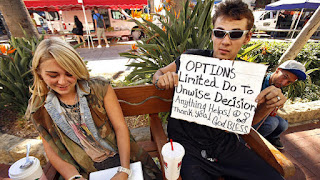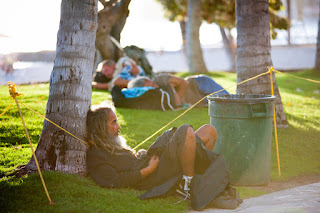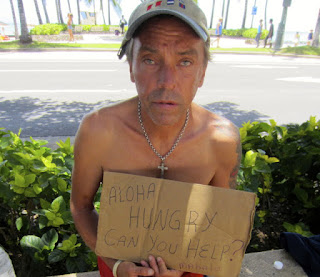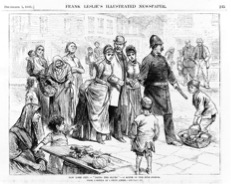On a very recent and very cold winter night in Manhattan I layered up and went to a church on 22nd street to attend a Homeless Forum sponsored by two New York City Council members, Dan Garodnick and Rosie Mendez, to learn more about this escalating crises in New York City.
The homeless crises is not a new crises, in fact it is a very old crises; however, “none of the kings’ horses and none of the kings’ men,” have been able to solve the problem for decades. People who have spent years in their nice well-paid government positions that were created to eliminate the problem of homelessness, have not found a way to provide housing and related services to adults and children who call the streets of New York – their home!
Who are THEY?
Who are the homeless? They are children and teenagers, young men and women, couples with dogs, seniors and physically and psychologically challenged – people, in other words, they are us! The difference is that somewhere along the way, through bad karma or bad decisions or just plain bad luck, they are living on the streets of New York.
The most recent count finds that 58,500 people are living in New York shelters. With only 255 shelters throughout the boroughs, it is easy to assume that overcrowding occurs on a regular basis. Food pantries and soup kitchens provide meals to 1.4 million New Yorkers; one out of every 5 people in New York – including older women, working families, veterans and children depend on these facilities for food provided by charitable/faith-based organizations.
Will Not Go
Not everyone wants to have a bed in a shelter; some homeless refuse admission because the accommodations are so horrible they prefer the cold cement of a sidewalk or a wire grate over a heat vent rather than a rat-infested and physically dangerous shelter. Mark Peters, Commissioner, NY Department of Investigation, stated the shelters offered, “Dangerous living conditions, rat-and-roach invested residences and fire violations are the stark reality facing too many homeless families and children in the City’s shelters” (March 20, 2015).
In 2015 volunteers spent one evening counting the people living on the streets and at the end of the project estimated that 3,357 people were living on the streets of New York. Identified as “The unsheltered homeless,” they are considered the most at risk population for serious injury. Many of these people are single or alienated from family and friends, frequently with drug and alcohol addictions and mental health issues.
Transition to Whatever?
A “safe haven” program has been introduced by the agencies for the Homeless and one of these facilities offers 125 beds to people who need transitional housing. This program has fewer restrictions than a traditional shelter and people do not have curfew, and sobriety is not required; however, people do have access to showers, meals, social services and counseling. Nine safe havens are available in the Bronx, Manhattan, Brooklyn and Staten Island – with a total capacity of 684 beds. In light of the numbers of people seeking shelter, the total for a City with the economic wealth of New York – this fact is more than an embarrassment – it is a tragedy.
Faith–based Assistance
Houses of Worship are an important part of the overall attempt to provide services to this underserved population; however, these facilities do not begin to meet the overwhelming need for assistance. In 2014 Holy Apostle South Kitchen in Chelsea dispensed 38,000 free toiletry items such as soap, toothpaste, razors. (In 2012 Holy Apostle distributed only 10,000 items). Riverside Church offers free coffee, cocoa and showers as well as food, clothing and haircuts and their overnight program is administered by the non-profit organization, Goddard Riverside Community Center. Last year, Catholic Charities provided approximately 6 million meals through parish and community food programs; prevented almost 6,500 families from becoming homeless; helped 1,267 individuals with temporary or transitional apartments; provided over 8000 individuals with emergency overnight shelter and found affordable housing for 7100 families… and this is still not enough!
Not Them
Homelessness is a challenge for everybody. It is a public health issue. Without housing and the social status to access restrooms in businesses and other public arenas people who are homeless and poor are forced to use the streets. Without access to professional health care people with chronic illness are further challenged by their life on the street. Sleeping outside regardless of weather conditions, eating cheap food and corralled in close spaces at social services agencies is a formula for spreading disease.
Being homeless is also an economic problem. As consumers of public resources they are considered to be “expensive” to the community and bad for business. A recent study determined that each homeless person costs the community $23,000 per year.
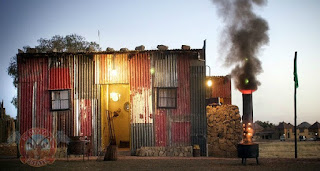 |
| The Emoya Luxury Hotel in Bloemfontein, South Africa |
Clueless
At the January Homeless Forum, representatives of New York City agencies and elected officials filled the air with homilies. If we were to believe their tales of programs and services and how good they are at their jobs – we would not have a homeless challenge. The streets of New York, the Bronx, Brooklyn, Queens and Staten Island would all look like a NY&Co brochure with Taylor Swift sharing her delight with being a New Yorker. Unfortunately the people tasked with finding a path to solving the dilemma are exactly the same people who have brought us to this incredibly horrific point.
Poorism as Tourism
Perhaps the answer to the New York street population is to formalize Poorism (also known as Slumming and Ghetto Tourism). What is Poorism? It is a label applied to slum tours or other experiences that bring visitors into extremely impoverished areas of the world. It can be entirely voyeuristic if all visitors are doing is staring and taking photos; however, it can be a way to generate income – not only for the tour operator but for the people living in the communities being visited.
Poorism was popular in New York at the end of the 19th century when wealthy people in New York City visited the Bowery and the Five Points area of the Lower East Side where poor immigrants lived, to “see how the other half lives.” During this time, faddish New Yorkers could see “Hebrews,” “squalid… neighborhoods and tenements – crowded with sweltering humanity.” Travel guidebooks offered routes through the Bowery and Five Points while businesses (the first slum tour operators) organized visits through New York City, Chicago and San Francisco.
Slowly slum tourism lost the façade of humanitarian efforts and catered to the wealthy persons desire to see the “exotic, impoverished immigrant communities.”
Poorism has reemerged and is now popular in Detroit, India, Brazil, and Kenya. In the mid-1980s Favela Tours starting walking trips through the notorious slum neighborhoods of Rio and Face to Face Tours started guiding the curious through Soweto, then an all-black township at the southwestern edge of Johannesburg, South Africa. More than 20 years later, Jimmy Ntintili, Founder of Face to Face claims to have guided more than a million people through Soweto. Since then other companies have gotten into the Poorism business and have organized tours of impoverished areas from the Kibera slums of Nairobi to the Dharavi slums of Mumbai, India.
Some people believe that the renewed interest in Poorism is related to the general increase in tourism linked to the desire of travelers who are looking for what is “authentic.” Tourists are tired of the artificially constructed landscapes (think Disney and gated man-made resorts) and are eager to seek out the “unfamiliar real world.”
City Funds for Tourism
While Mayor DeBlasio struggles to find funding for homeless projects, the City of New York gave NY & Company $12 million dollars to assist the organization increase the number of visitors. Although the organization presents itself as a privately supported operation that is funded by membership from hotels, restaurants and other industry partners, the reality is that it is heavily dependent on tax payers dollars (one-third of its budget) to support its efforts. Having missed it mark last year (tourism was expected to generate $70 billion but generated only $61.3 billion) additional funds from the City have been allocated to increase promotional activities.
Perhaps it is time to review the perception of homeless New Yorkers as a “blight” on the city and instead look upon the increasingly large numbers of people living on the streets, in the parks and subways as reasons for people to visit New York and experience Poorism.
The Emoya Luxury Hotel in Bloemfontein, South Africa is a poverty themed hotel that allows guests to experience the reality of a stay in the only “shanty town in the world equipped with under-floor heating and wireless access.” Steven Colbert has termed this experience as “glumming” or glamour slumming.
New York can offer a much more “authentic” experience than the Emoya; New York City visitors can experience an afternoon or evening at the Bellevue Men’s Shelter –an 850 bed facility for men at 400 East 30th Street, NYC. Located between two schools (one serves mentally disabled children and the other is a Montessori School). Sabina Mollot (Town-Village.com; June 12, 2015) found that the men living at the shelter have, “…become a near-constant presence on the sidewalks, loitering, fighting, panhandling and using phone booths on the corners as a toilet as well as a spot to do drugs.”
Tourists participating in Poorism can see, first hand, how the homeless display themselves in public, defecate in the street, and harass mothers and their children. Perhaps the Poorism tours, organized by the homeless and promoted by NY&Co can use the funds generated from the tour to pay the organizers and guides as well as for improvements in the shelter and/or invested in other properties that will enable this facility to be downsized or closed.
The Slum Lord Business Model
New York City spent over $800 million on shelters in 2013, $200 million more than in 2010 and it relies heavily on outsourced providers. One family owns or controls close to 40 shelters which house approximately 1300 homeless families. The city’s Department of Homeless Service pays slum landlords many times the over the market rate for the rooms – spending over $3000 per month for each basic unit without a bathroom or kitchen. City records show that one family generated rents in the range of $90+ million since 2010.
On March 20, 2015 Mayor DeBlasio issued a 45 second robocall asking potential landlords to provide housing to the homeless. As an incentive the Mayor offered the realty owners a $1000 bonus plus guaranteed city-paid rent for leases.
Where is the Will?
Sita Slavov of the American Enterprise Institute has observed that all of this poverty and homelessness on the streets of New York is displayed against a backdrop of the US government bailing out financial institutions they themselves created through a mix of greed and stupidity. The rescue came from taxpayers’ money. Wall Street bankers continue to be conspicuously generous with themselves while getting state and federal assistance and keeping the poor as impoverished as they possibly can. The bailouts have demonstrated the willingness of the government to save large financial institutions at the expense of its citizens. By doing so, they have created a moral hazard, giving banks an incentive to become even more reckless.
Solutions
For the unfortunate individual or family to find themselves homeless – the challenge is enormous. Navigating the shelter system, housing authorities and sourcing other services is awesome, difficult and many times Kafkaesque.
Poorism is certainly not an option. Perhaps the first step is prevention. Funds should be used to keep individuals and families in housing when they are struggling to make ends meet and by making sure that when people are discharged from hospitals, jails, or treatment programs they have somewhere to go other than the streets.
The next step is to shift the focus from shelters or temporary housing to investing resources into permanent housing programs that integrate social services. From the time land is acquired and an architect is hired social service experts should be engaged in the design and development of the structure so that all the social, psychological needs of the community are addressed at one location and this includes substance abuse treatment, mental health care and employment coaching.
It is then necessary to provide assistance to the people in these communities so that they can stabilize their lives and maintain their homes on a long-term basis.
The overarching question remains – can the people who created the problem be successful in cleaning up the mess they created? With no new ideas and lots of hand-wringing – there is little room for optimism.
This copyright article may not be reproduced without written permission from the author.



